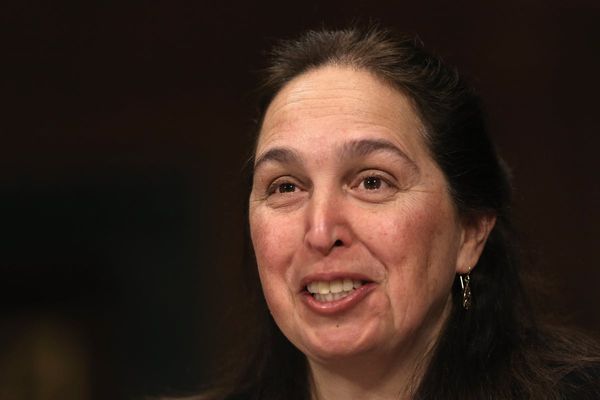
Politicians and economists say President Donald Trump’s “Liberation Day” tariff rollout amounted to a historic tax increase in the United States.
“Donald Trump just imposed the largest tax hike in our lifetime,” Democratic California Governor Gavin Newsom posted on X on April 2.
Other Democratic politicians made similar claims, including Illinois Governor JB Pritzker, US Senator Chuck Schumer, and US Representative Jared Moskowitz, while Republican Mike Pence called it “the largest peacetime tax hike in US history”.
It is clear the change under the April 2 plan is historic. The global tariffs Trump announced target almost every country the US trades with. All countries on the list face a baseline tariff of 10 percent, with others facing tariffs as high as 50 percent.
Estimates vary for the tariff hike’s scope, partly because of Trump’s back and forth on specific tariffs, and global market unpredictability. Trump has repeatedly posted on social media that he is negotiating with countries over their tariff rates, so plans could shift.
Measuring how much the average tariff rate has increased, Trump’s tariff hike ranks as the biggest in almost a century. Measuring by how much tax revenue the tariffs will bring in, estimates vary.
Five out of the seven estimates Al Jazeera identified rank these new tariffs as the biggest tax increase since 1951, with the most conservative estimate ranking it as the largest since 1982.
Is increasing tariffs the same as a ‘tax hike’?
Experts say it is fair to call tariffs a tax.
“They are taxes that apply to US imports,” said Erica York, vice president of federal tax policy with the Tax Foundation, a nonpartisan think tank.
Tariffs are import taxes businesses pay to the federal government when buying goods and materials from other countries. Businesses often pass along that increased cost to consumers.
Reports from economic policy think tanks with a wide range of political views describe tariffs as a regressive tax, meaning lower income groups are hit harder by the rising costs.
Economists say this tariff rate hike hasn’t been seen in almost a century
Measuring tariff hikes comes with challenges. The tariff rates vary by country and include exemptions for specific goods.
Trump’s tariff policy has been volatile, with tariffs announced and then rapidly pulled back, sometimes within the day. They could change depending on how countries negotiate with the US or respond with their own tariffs.
One way to measure this tariff hike’s size is to compare the new average effective tariff rate with historic rates.
Various economic policy groups, including the Tax Foundation, the Yale Budget Lab and JPMorgan Chase, estimated the new tariff rates at 16.5 percent, 22.5 percent and 27 percent. Each rate is the largest in nearly a century.
When Trump took office, the average effective tariff rate was 2.4 percent.
When measuring new tariffs by expected revenue, it’s still historic
Another way to measure tariffs’ impact is by expected revenue collections. The more revenue the government collects, the bigger the hike.
The Trump administration has argued that by raising revenue through tariffs, other federal taxes could be cut. Economists previously told us it is unlikely high tariffs could generate enough revenue to result in meaningful tax reductions for typical Americans.
Some of the largest estimates of tariff revenues have come from the Trump administration. In a March 30 Fox News interview, White House trade adviser Peter Navarro said nonautomotive tariffs “are going to raise about $600bn [a year], about $6 trillion over a 10-year period”, with an additional $100bn a year from auto tariffs.
One way economists put these estimates in historical context is by examining increases in tax revenue as a percentage of gross domestic product (GDP).
A 2006 Treasury Department report calculated this value for all major tax bills since 1940. Most of the largest tax increases took place during wartime, in the 1940s and 50s.
If tax revenue increased by the amount Navarro estimated, $700bn, it would represent about 2.3 percent of almost $30 trillion US GDP, making it the largest tax increase since 1942.
Navarro did not elaborate on how he arrived at that $700bn figure, but CNN found it would require a 20-25 percent tariff on $3.3 trillion worth of goods, which is how much the US imported in 2024.
Some economists questioned Navarro’s estimate. “Plainly put, the Navarro estimate is flat out wrong,” York told PolitiFact. “Tariffs will reduce imports, and they will mechanically reduce income and payroll tax revenues; if you don’t account for those you significantly oversell how much revenue tariffs will yield.”
The US economy could shrink, imports could drop and other countries could retaliate with their own tariffs, all resulting in lower tax revenue from tariffs.
The Tax Foundation’s revenue estimate for 2025 was lower at $258.4bn, or 0.85 percent of GDP, which would make it the largest tax increase since 1982.
Michael Feroli, chief economist at JPMorgan Chase, offered an estimate of $400bn, or about 1.3 percent of GDP. He described this as the largest tax increase since 1968, but based on data from the Treasury Department, 1.3 percent of GDP would make it the highest since 1951.
Dean Baker, co-founder of the Center for Economic and Policy Research, a liberal think tank, told PolitiFact some revenue estimates looked too low. He estimated nearly $1 trillion in tax revenue.
“As a practical matter, some goods are exempted and demand will surely fall, so it won’t be anywhere near that high, but I think even the JPMorgan number is very low,” Baker said.
Five out of seven of the estimates that we identified for Trump’s tariff plan are the highest since 1951.







